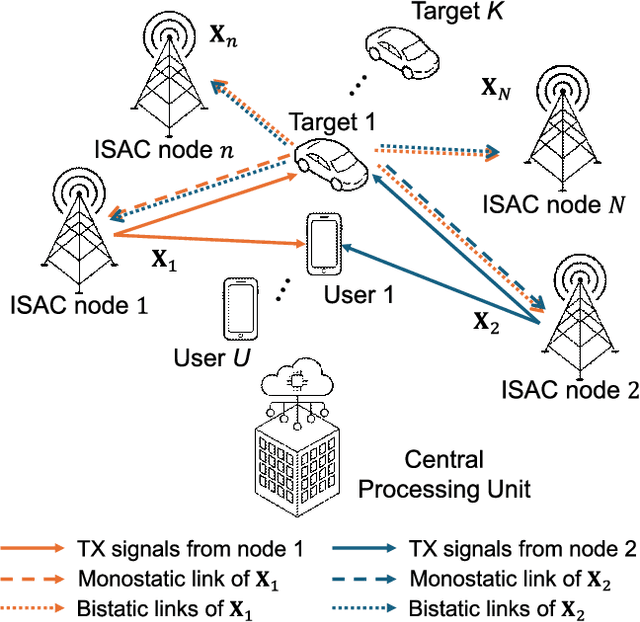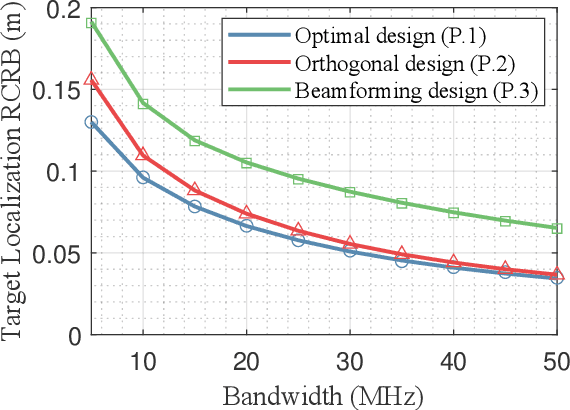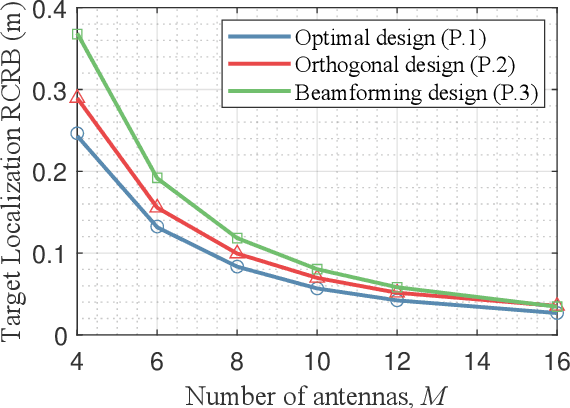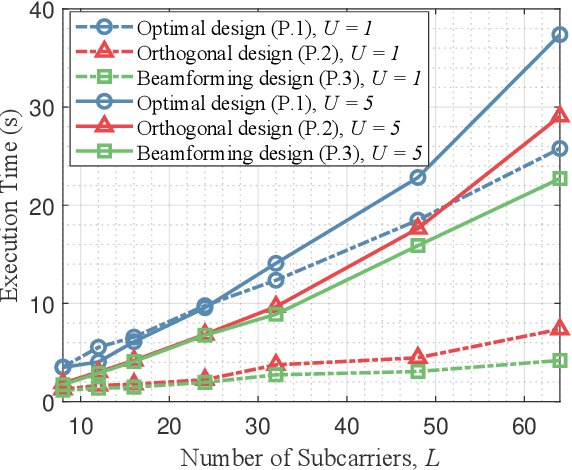Signaling Design for Noncoherent Distributed Integrated Sensing and Communication Systems
Paper and Code
Jan 30, 2025



The ultimate goal of enabling sensing through the cellular network is to obtain coordinated sensing of an unprecedented scale, through distributed integrated sensing and communication (D-ISAC). This, however, introduces challenges related to synchronization and demands new transmission methodologies. In this paper, we propose a transmit signal design framework for D-ISAC systems, where multiple ISAC nodes cooperatively perform sensing and communication without requiring phase-level synchronization. The proposed framework employing orthogonal frequency division multiplexing (OFDM) jointly designs downlink coordinated multi-point (CoMP) communication signals and multi-input multi-output (MIMO) radar signals, leveraging both collocated and distributed MIMO radars to estimate angle-of-arrival (AOA) and time-of-flight (TOF) from all possible multi-static measurements for target localization. To design the optimal D-ISAC transmit signal, we use the target localization Cram\'er-Rao bound (CRB) as the sensing performance metric and the signal-to-interference-plus-noise ratio (SINR) as the communication performance metric. Then, an optimization problem is formulated to minimize the localization CRB while maintaining a minimum SINR requirement for each communication user. Moreover, we present three distinct transmit signal design approaches, including optimal, orthogonal, and beamforming designs, which reveal trade-offs between ISAC performance and computational complexity. Unlike single-node ISAC systems, the proposed D-ISAC designs involve per-subcarrier sensing signal optimization to enable accurate TOF estimation, which contributes to the target localization performance. Numerical simulations demonstrate the effectiveness of the proposed designs in achieving flexible ISAC trade-offs and efficient D-ISAC signal transmission.
 Add to Chrome
Add to Chrome Add to Firefox
Add to Firefox Add to Edge
Add to Edge